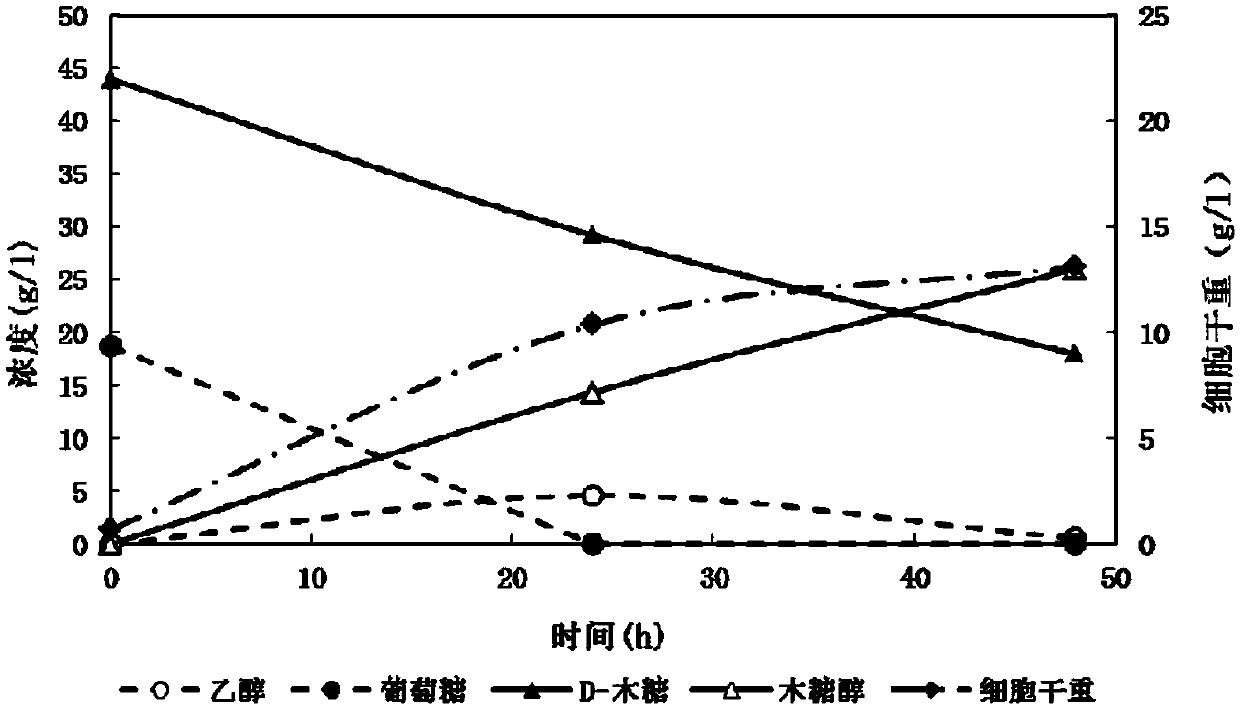Industrial saccharomyces cerevisiae strain capable of producing xylitol and construction method of industrial saccharomyces cerevisiae strain
A technology of Saccharomyces cerevisiae strain and construction method, which is applied to the field of industrial Saccharomyces cerevisiae producing xylitol and construction, and can solve the problems of low expression level, high xylitol yield, loss of exogenous genes and the like
- Summary
- Abstract
- Description
- Claims
- Application Information
AI Technical Summary
Problems solved by technology
Method used
Image
Examples
Embodiment
[0047] A method for constructing a xylitol-producing industrial Saccharomyces cerevisiae strain, comprising the following steps: (1), designing and amplifying primers containing a target gene: according to the published δ sequence in the NCBI database, designing and synthesizing two pairs of primers: one of A pair of primers is δ-pB-F (SEQ ID NO.2), δ-pB-R (SEQ ID NO.3); another pair of primers is δ-XR-XDH-F (SEQ ID NO.4), δ-pB-R (SEQ ID NO. .3);
[0048] (2) Preparation of pK-XR-Ct plasmid;
[0049] (3) Amplification of the target gene: using the pK-XR-Ct plasmid as a template and δ-pB-F and δ-pB-R as primers, amplify xyl1 containing xylose reductase gene and G418 resistance screening gene Linearized DNA fragment A of KanMX, and purify and recover fragment A obtained by PCR amplification; the promoter of gene xyl1 is pGAPDH, and the terminator is tGAPDH; the promoter of KanMX gene is pTEF1, and the terminator is tTEF1; PCR amplification reaction system (50 μl) is composed a...
PUM
 Login to View More
Login to View More Abstract
Description
Claims
Application Information
 Login to View More
Login to View More - R&D
- Intellectual Property
- Life Sciences
- Materials
- Tech Scout
- Unparalleled Data Quality
- Higher Quality Content
- 60% Fewer Hallucinations
Browse by: Latest US Patents, China's latest patents, Technical Efficacy Thesaurus, Application Domain, Technology Topic, Popular Technical Reports.
© 2025 PatSnap. All rights reserved.Legal|Privacy policy|Modern Slavery Act Transparency Statement|Sitemap|About US| Contact US: help@patsnap.com



